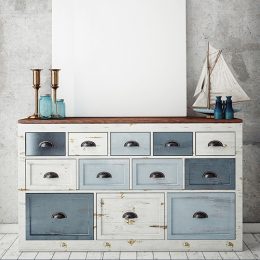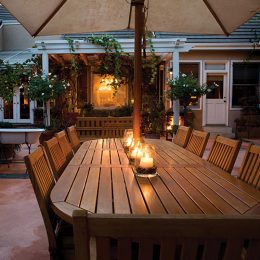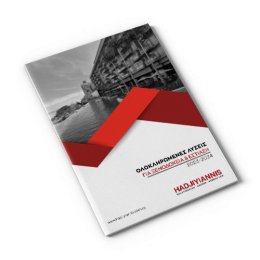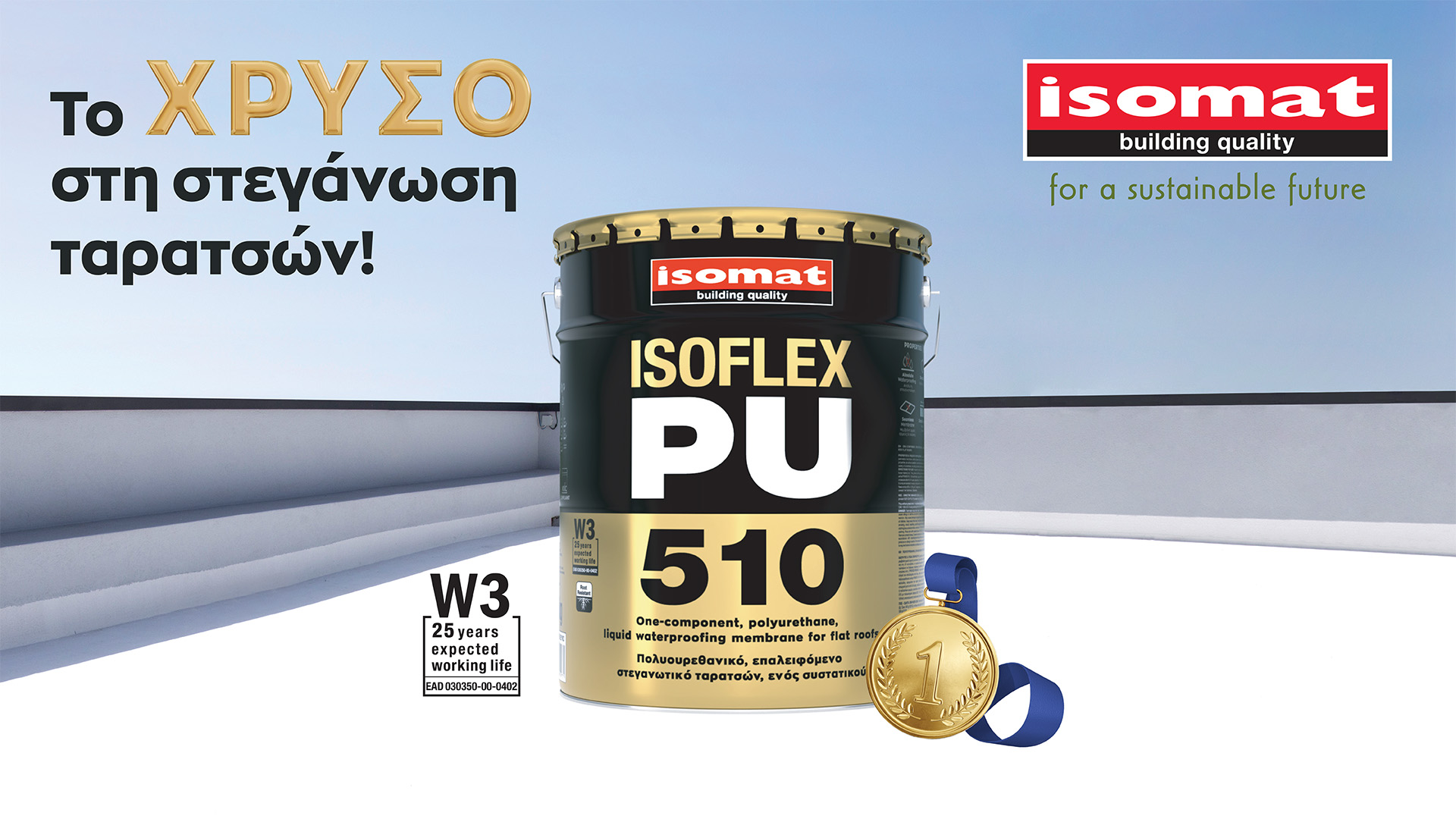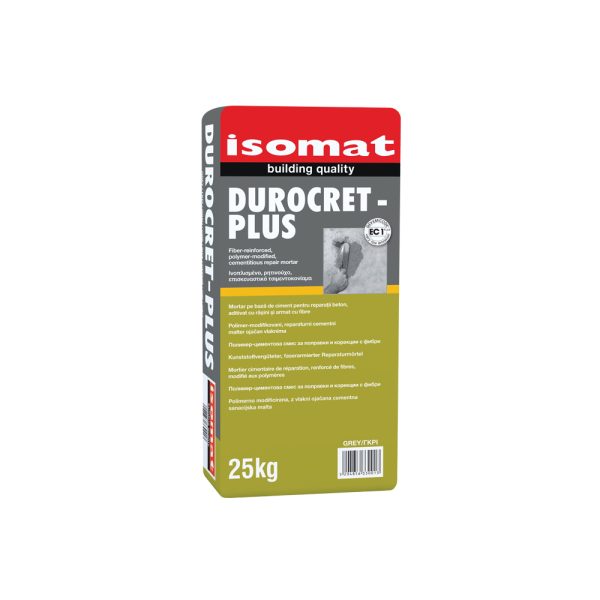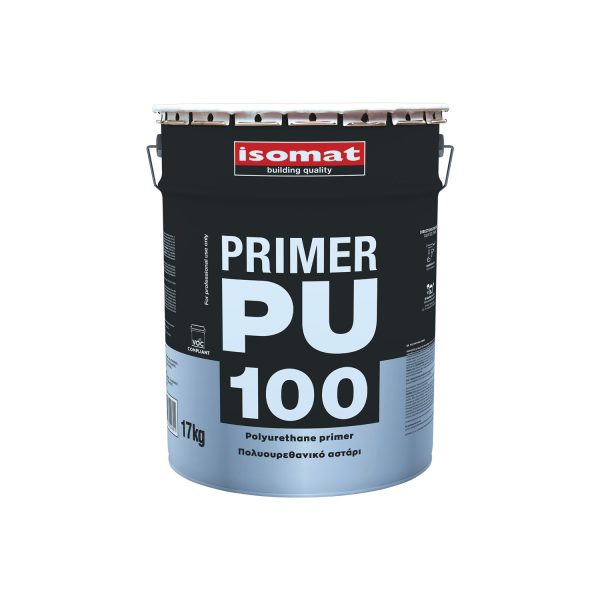The roof is perhaps the most exposed part of a building to moisture, weather conditions, and atmospheric pollution. Throughout the year, it is subjected to intense stresses, and if its waterproofing is inadequate, serious problems may occur that not only affect the daily comfort of the occupants but also increase the building’s maintenance and operational costs.
For demanding cases, such as roofs with insufficient slopes or areas where standing water remains for long periods, ISOMAT has developed ISOFLEX-PU 510, a 100% polyurethane, one-component, ready-to-use, liquid-applied waterproofing membrane, as a premium waterproofing solution.
The seamless, joint-free membrane it forms provides outstanding resistance to ponding water, mechanical, chemical, and thermal stresses, as well as to UV radiation and weathering. It exhibits excellent adhesion to a wide variety of substrates and can be used as an exposed coating on roofs, balconies, and metal surfaces, as well as under tiles, provided that quartz sand is broadcast onto the fresh final layer of ISOFLEX-PU 510.
Its application range also includes waterproofing beneath thermal insulation boards, in civil engineering structures and road construction, and the refurbishment and protection of existing bituminous membranes. Furthermore, ISOFLEX-PU 510 is recommended for green roof systems, having been successfully tested by an independent laboratory for root resistance.
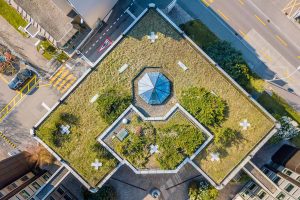
The choice of green roofs enhances the building’s aesthetics, provides an ideal environment for various activities, and significantly contributes to sustainable, environmentally friendly construction. Within the framework of sustainable building practices, ISOFLEX-PU 510 features an Environmental Product Declaration (EPD), the most comprehensive tool for assessing and publishing the product’s environmental footprint throughout its entire life cycle.
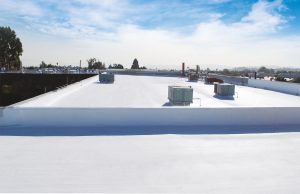
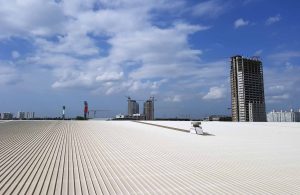
Additionally, it has an expected service life of up to 25 years (classified as W3 under the most severe conditions of the European Assessment Document EAD 030350-00-0402), minimizing maintenance needs. Its application should be carried out exclusively by experienced and specialized contractors, ensuring a permanent waterproofing solution even for the most demanding roofs.
Step-by-Step Application Guide
- Surface Cleaning and Substrate Preparation
Thoroughly clean the substrate from loose particles, grease, and dust. Carry out any local repairs using DUROCRET-PLUS, a PCC R3-class, fiber-reinforced polymer-modified repair mortar.
If slope formation or levelling is required, apply SCREED-100, a floor screed mortar.
On clean and dry concrete surfaces (moisture content < 4%), after the repair materials have cured, apply the one-component polyurethane primer PRIMER-PU 100 (200–300 g/m²) uniformly over the entire surface using a brush, roller, or spray.
If the substrate has a moisture content > 4%, replace PRIMER-PU 100 with the two-component polyurethane primer PRIMER-PU 140, designed for damp substrates (200–250 g/m²).
For crack sealing (width > 1 mm), after the primer has cured, use FLEX PU-30 S or FLEX PU-50 S, polyurethane sealants for effective joint sealing.
- Full Surface Waterproofing and Local Reinforcement
Before application, stir ISOFLEX-PU 510 gently to achieve a homogeneous mixture. Avoid vigorous stirring to prevent air entrapment.
Approximately 2–3 hours after applying PRIMER-PU 100, while the surface remains slightly tacky, apply ISOFLEX-PU 510 locally along corners (where horizontal and vertical surfaces meet), cracks, pipe penetrations, vents, and skylights. While the coating is still wet, embed a polyester fabric strip (60 g/m²) of 10 cm width.
Then, apply the first full coat of ISOFLEX-PU 510 across the entire surface. After 8–24 hours, depending on weather conditions, apply the second full coat, crosswise to the first one. A third local coat is applied after 8–24 hours over reinforced areas to ensure full coverage of the fabric.
Typical total consumption: 1.0–1.5 kg/m², depending on substrate porosity, plus 200–250 g/m along reinforcements.
TIPS:
- ISOFLEX-PU 510 can be applied by brush, roller, or airless spray. For spray application, it can be diluted by up to 10% with SM-28 thinner, depending on ambient conditions.
- Apply successive coats crosswise for optimum coverage.
Case of substrates with multiple, dense cracks
When numerous fine cracks are present, full reinforcement is required using polyester fabric (60 g/m²) of 100 cm width. After the polyurethane primer PRIMER-PU 100 has dried (approx. 2–3 hours), apply a first coat of ISOFLEX-PU 510 at a width equal to the fabric. While still wet, embed the polyester fabric with 5–10 cm overlaps between strips.
Once the layer has cured (8 -24 hours), apply two full coats of ISOFLEX-PU 510 over the entire surface to completely cover the reinforcement.
Total indicative consumption: ≥ 2.5 kg/m², depending on substrate type.
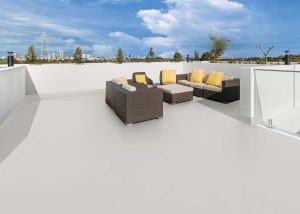
For fully trafficable roofs or enhanced UV protection
After the final coat of ISOFLEX-PU 510 has cured, apply TOPCOAT-PU 720, an aliphatic, UV-stable polyurethane topcoat, in two crosswise coats.
Total indicative consumption: 0.30–0.40 kg/m², depending on substrate.
Key Application Notes
- Always apply the recommended total quantity per square meter to achieve the correct dry film thickness and ensure full waterproofing and durability. The maximum consumption per coat must not exceed 750 g/m².
- Avoid application during periods of extreme cold, heat, or when rain is expected. The ambient and substrate temperature during application and curing should be between +8°C and +35°C.
- Calculate the total quantity required before application, as opened containers cannot be re-sealed and the material must be used immediately after opening.
Don’t Forget!
Waterproofing roofs with high solar reflectivity materials like ISOFLEX-PU 510 enhances the building’s energy efficiency by reducing the surface temperature of the roof and lowering its environmental footprint. Specifically, it limits heat transfer into the building, reducing cooling demands during summer months and providing a more thermally comfortable environment for occupants, especially those on upper floors. At the same time, its high reflectivity reduces heat absorption by the building envelope, helping to mitigate the urban heat island effect, a major environmental issue in large cities. Therefore, the use of ISOFLEX-PU 510 contributes to achieving sustainability certifications such as LEED, aligning your project with modern standards of green and energy-efficient construction.

